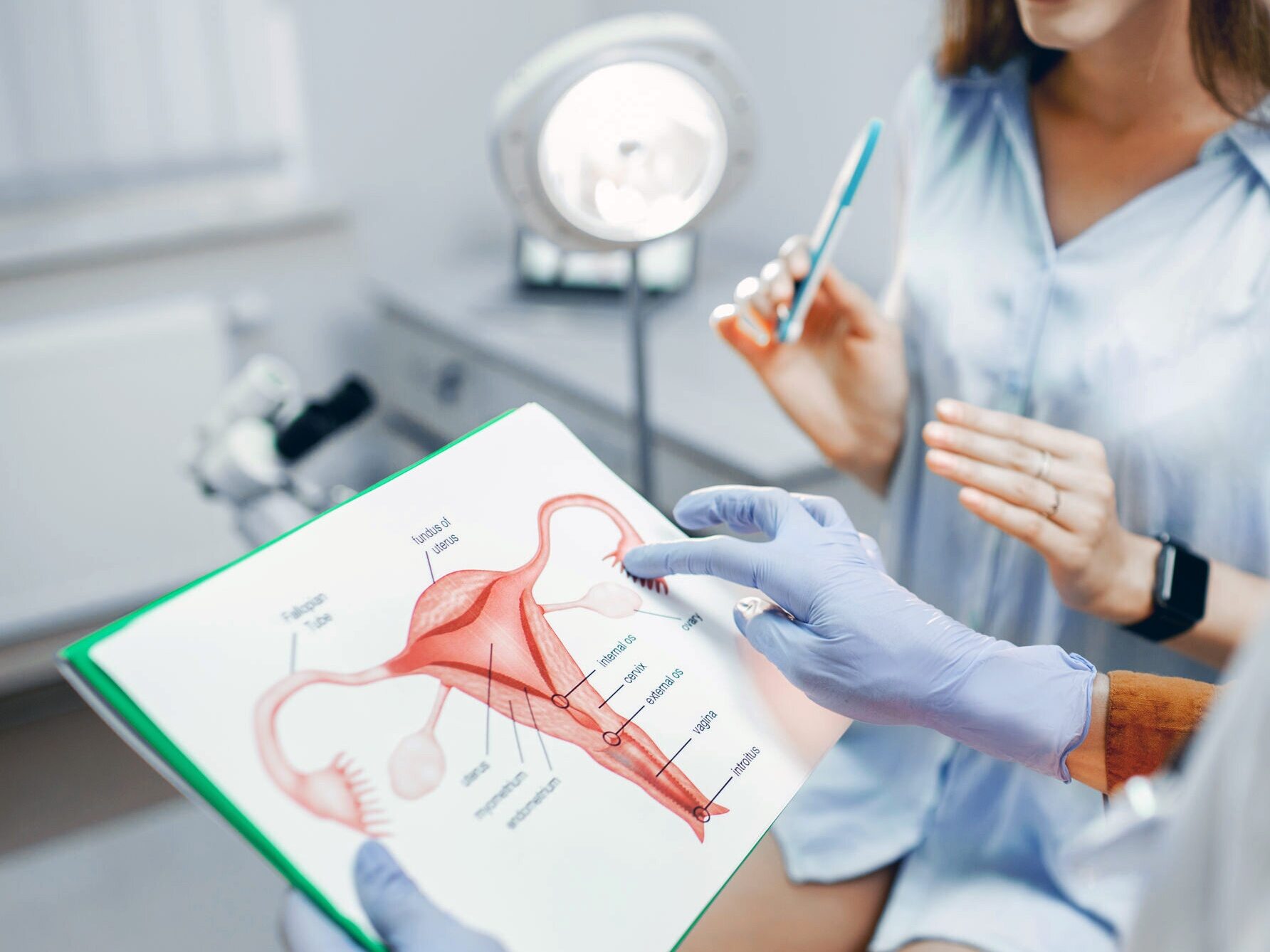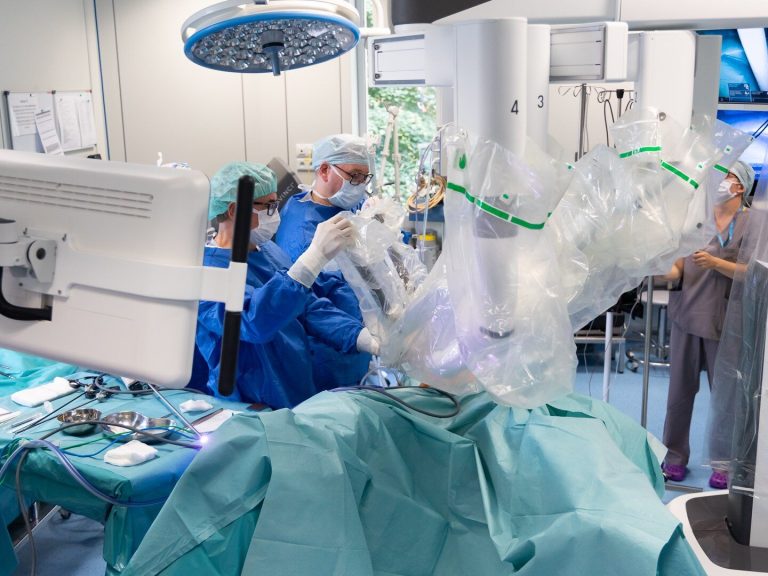Adenomyosis – what is it, causes, symptoms and treatment

Adenomyosis is a condition that only affects women. It causes various types of pathological changes in the uterus – in the course of adenomyosis, endometrial cells, i.e. cells of the uterine mucosa, penetrate deep into the structure of the uterine muscle, creating, among others, tumors and cysts. We explain its causes and the most common symptoms.
- What is adenomyosis?
- Causes of adenomyosis
- Symptoms of adenomyosis
- What is the treatment for adenomyosis?
Although adenomyosis has been a known disease for a long time, it has still not been possible to detect all the factors that cause it. Adenomyosis was once called internal endometriosis or endometriosis of the uterine wall. It is known that estrogens play an important role in its development. Adenomyosis is most often diagnosed in women of reproductive age. The peak incidence occurs between the third and fifth decades of life. This condition causes the cells that line the inside of the uterus (endometrial cells) to penetrate the muscular lining of the uterus. The result of pathological endometrial hyperplasia is the formation of tumors, adhesions, cysts and damage to the uterine muscle.
Adenomyosis may be disseminated or cause disease outbreaks. This disease not only causes troublesome symptoms, including: increased menstrual bleeding, increased pain during menstruation, painful sexual intercourse, but also causes difficulties in conceiving naturally.
It is worth learning more about the causes, symptoms and complications of adenomyosis. This condition hinders normal functioning and is associated with an increased risk of various complications. Endometrial cells penetrating deep into the uterine muscle can, among other things, significantly impede the transport of sperm, affecting the fertilization process, and disturb the course of pregnancy, causing miscarriages. Women suffering from adenomyosis should be under constant care of a gynecologist.
What is adenomyosis?
Adenomyosis is a disease associated with abnormal growth of the uterine lining. If the uterine mucosa is outside its physiological location, endometrial ectopia is diagnosed. The presence of endometrium outside the uterine cavity is a pathological condition. As a result of, among others, hormones, the uterine mucosa can “wander”, becoming located in various tissues of the genitals and other organs located in the abdominal cavity.
Adenomyosis is diagnosed when the uterine mucosa is located within the smooth muscles of the organs – most often, in the course of adenomyosis, the endometrium is located inside the muscular membrane of the uterus, specifically in the area of its body. If endometrial tissue grows into the surface of the peritoneum and ovary, we are dealing with endometriosis. In the case of endometriosis, there are also troublesome symptoms and complications related to, among others: with problems getting pregnant.
It was once believed that adenomyosis was a derivative of endometriosis. However, research has proven that endometriosis and adenomyosis should be treated as separate diseases.
Causes of adenomyosis
There are many theories about the causes of adenomyosis, but none of them has been fully confirmed. The conducted research allowed us to isolate several possible causes and risk factors that may be related to the development of adenomyosis.
The research results confirmed the relationship between adenomyosis and estrogen secretion. It occurs primarily in women of childbearing age and in postmenopausal women who take hormonal drugs used to treat breast cancer. It is less frequently diagnosed in teenagers. In the case of young women, adenomyosis is not diagnosed in its typical form – in women who are under 35 years of age, we are dealing with cystic adenomyosis of the uterus, in which cysts of various sizes are formed. Inside the cyst there are, among others: immune system cells.
The risk of adenomyosis increases, among others: curettage of the uterus after miscarriage, which causes damage to the smooth muscle fibers of the uterus.
Symptoms of adenomyosis
Symptoms that may indicate adenomyosis include:
-
prolongation of menstruation,
-
increased menstrual bleeding,
-
worsening pain during menstruation,
-
spotting and bleeding between periods,
-
pain during intercourse.
In some women, adenomyosis manifests itself by chronic pain in the lower abdomen, which may radiate to the pubic symphysis and thighs. Symptoms of adenomyosis also include problems with getting pregnant and maintaining a pregnancy – adenomyosis is one of the causes of infertility and is often the cause of miscarriages and premature births. The impact of adenomyosis on the course of pregnancy depends on the condition of the uterine muscular membrane, which is damaged during the disease. Adenomyosis leads to miscarriage more often than endometriosis.
It is worth knowing that adenomyosis does not always cause symptoms that require a visit to a gynecologist. Sometimes the course of the disease is asymptomatic.
Regular visits to a gynecologist are important for a woman’s health as well as the success of trying to conceive, thanks to which it is possible to detect various diseases at an early stage of development. Importantly, all changes related to the menstrual cycle should be consulted with a doctor. Severe pain, heavy bleeding and prolonged menstruation are often associated with diseases of the reproductive organs. It is worth talking to your doctor about problems during sexual intercourse, which are also a valuable diagnostic clue. Pain during intercourse and bleeding after intercourse are symptoms that are often omitted during a conversation with a gynecologist and may indicate not only endometrial ectopia, but also other diseases.
What is the treatment for adenomyosis?
The method of treating adenomyosis is selected, among others: to the patient’s age. Hormonal treatment is used in women who plan motherhood. Women who have gone through menopause or do not plan motherhood undergo surgery to remove the uterus.
Sources:
-
M. Galuda, M. Gabryś, M. Ujec, K. Kmieciak, Adenomyoza, Cornetis Publishing House, Wrocław, 2003
-
M. Gabryś, Adenomyosis – diagnosis and current treatment methods, Monographs after Diploma, No. 1, 2020
-
Grzegorz H. Bręborowicz, Obstetrics and gynecology Repetytorium, Wydawnictwo Lekarskie PZWL, Warsaw, 2010






